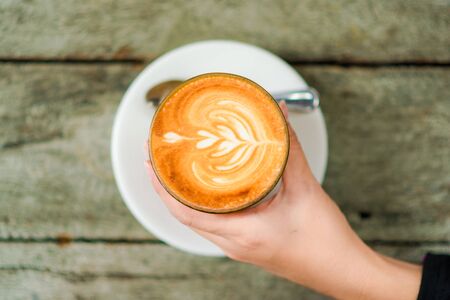The Origins of Kaffebar Culture
To truly appreciate the legacy of iconic Nordic coffee shops, we must first journey back to the roots of the ‘kaffebar’ tradition. In the Nordic region, coffee has long been more than just a daily pick-me-up; it’s an integral part of social life, a gentle ritual that brings people together, and a reflection of the culture’s appreciation for simplicity and connection. The first kaffebars began appearing in cities like Stockholm, Copenhagen, and Oslo in the early 20th century, drawing inspiration from both local customs and European café culture. These early spots were cozy sanctuaries from the brisk northern climate—a place where friends could linger over a cup, share stories, and find comfort in community. Over time, the kaffebar evolved into a symbol of Nordic hospitality and design, known for its minimalist interiors, high-quality brews, and a unique sense of warmth that welcomed everyone through its doors. As Nordic countries gained global recognition for their innovative approach to coffee, the influence of kaffebar culture spread far beyond Scandinavia, inspiring café owners and coffee lovers around the world to embrace this thoughtful way of gathering. Today, exploring these iconic Nordic coffee shops is more than just tasting great coffee—it’s about experiencing a living tradition shaped by decades of care, craftsmanship, and genuine human connection.
2. Defining Features of Iconic Nordic Coffee Shops
If you’ve ever stepped into a Nordic coffee shop, you’ll notice there’s something undeniably special about the experience. These spaces are carefully crafted to offer more than just a caffeine fix—they invite you to slow down, savor the moment, and connect with your surroundings. Let’s explore what truly sets these iconic Kaffebar destinations apart in the American coffee landscape.
Minimalist Design Philosophy
Nordic coffee shops are renowned for their minimalist interiors, reflecting the Scandinavian principle that less is more. Clean lines, natural materials like birch and ash wood, and an abundance of light create environments that feel both calming and intentional. Every element has a purpose—there’s no clutter, just thoughtful design that encourages guests to focus on their coffee and company.
Cozy Atmospheres: The Art of Hygge
Another defining feature is the warm, inviting atmosphere—a concept known in Denmark as “hygge.” Nordic cafes blend simplicity with comfort, offering plush seating, soft lighting, and communal tables that foster connection. Whether you’re meeting a friend or taking a quiet moment for yourself, these shops make everyone feel welcome. In bustling American cities, this sense of coziness can be a welcome retreat from the daily rush.
Ethically Sourced Brews
Iconic Kaffebar establishments take pride in serving high-quality, ethically sourced coffee. Many partner directly with farmers or cooperatives to ensure fair wages and sustainable practices. It’s not just about great taste—it’s about making a positive impact, from bean to cup. Here’s a quick look at how Nordic coffee shops prioritize sourcing:
| Sourcing Practice | Typical Approach |
|---|---|
| Direct Trade | Building relationships with coffee growers for transparency and fair compensation |
| Sustainability | Emphasizing eco-friendly farming methods and reducing waste |
| Quality Focus | Selecting beans based on flavor profile and freshness |
The Experience Beyond the Cup
What truly distinguishes these Nordic-inspired spots in America is their commitment to creating an immersive experience. From the first sip to the last crumb of a cinnamon bun, every detail is curated to nurture a sense of belonging and well-being. It’s about more than coffee—it’s about legacy, community, and the joy of simple pleasures.

3. Stories Behind the Coffee Bars
Every great kaffebar has a story, and these iconic Nordic coffee shops are no exception. At the heart of each space are passionate founders and dedicated baristas whose dreams, backgrounds, and values create an atmosphere you can feel as soon as you step inside. Take, for example, the couple who left corporate careers in Stockholm to open a cozy café inspired by their grandmother’s hospitality, or the former architect in Copenhagen who designed his minimalist shop to encourage quiet reflection and community connection. These individuals pour their hearts into every detail—from sourcing ethically grown beans to crafting pastries that remind them of home.
The magic doesn’t stop with owners and staff; it extends to the communities that gather around each kaffebar. Regulars often become part of the family, sharing life milestones over steaming mugs or volunteering during local events hosted by the café. In many ways, these stories add depth and warmth to the modern Scandinavian aesthetic. They transform a simple cup of coffee into an experience—a daily ritual rich with meaning, friendship, and a sense of belonging. It’s this blend of personal passion and communal spirit that continues to make Nordic coffee culture so beloved across the globe.
4. The Nordic Approach to Coffee and Community
Stepping into a Nordic kaffebar, you’re greeted by more than just the aroma of expertly brewed coffee—you enter a space intentionally crafted for connection. Unlike the fast-paced hustle often found in American coffee chains, Nordic coffee bars embrace a philosophy rooted in slow living. Here, coffee isn’t just about caffeine; it’s about cultivating genuine human relationships and fostering a sense of belonging, whether you’re a seasoned regular or a curious newcomer.
This approach draws from cherished Nordic values such as trust, openness, and community spirit. Instead of quick service counters, you’ll find communal tables, cozy nooks, and baristas who remember your name—and maybe even your favorite pastry. In many ways, these spaces function as modern-day “third places,” filling the gap between home and work where friendships can blossom over lingering cups of filter coffee.
| Element | Nordic Kaffebar | Typical U.S. Coffee Shop |
|---|---|---|
| Atmosphere | Warm, minimalistic, inviting for conversation | Varies from cozy to high-energy, often focused on efficiency |
| Service Style | Personalized, slower pace | Quick service, emphasis on speed |
| Community Focus | Regulars form close bonds; newcomers welcomed with openness | Can be transactional; community varies by location |
| Coffee Rituals | Savoring moments, often shared “fika” breaks | Grab-and-go culture dominates |
The unhurried pace at a Nordic kaffebar naturally encourages deeper interactions. People linger over their mugs, engaging in meaningful conversations rather than rushing out the door. The tradition of “fika”—a Swedish coffee break shared with others—exemplifies this ethos, turning everyday moments into opportunities for connection and reflection. In this way, Nordic coffee bars aren’t just places to get caffeinated—they’re sanctuaries for building trust and nurturing community ties that often extend well beyond the café walls.
5. Influence on American Coffee Culture
Over the past decade, the legacy of Nordic kaffebars has quietly but profoundly shaped the landscape of American specialty coffee. From the moment you step into a modern café in cities like Portland, New York, or San Francisco, you can sense echoes of Scandinavian sensibility—clean lines, natural materials, and a minimalist ethos that invites calm focus rather than hustle.
Design That Invites Connection
The Nordic approach to design values simplicity and warmth in equal measure. Many American coffee shops now feature open spaces, communal tables, and plenty of light—choices inspired by iconic kaffebars in Oslo or Stockholm. The intention is to create an environment where guests feel both welcome and unhurried, a subtle encouragement to linger over a single cup or engage in meaningful conversation. This atmosphere stands in refreshing contrast to the high-energy, takeout-driven model that once defined much of American coffee culture.
Service Rooted in Hospitality
Beyond aesthetics, the service philosophy borrowed from Nordic tradition centers on genuine hospitality. Baristas are trained not just as skilled coffee makers but as attentive hosts. There’s an emphasis on approachability and sharing knowledge: explaining origins of beans, discussing brew methods, or simply recommending a pastry with your drink. This personalized touch fosters loyalty and transforms routine visits into memorable experiences.
Elevating Quality Over Quantity
One of the most significant Nordic influences is the prioritization of quality over volume. American specialty cafés increasingly source traceable, ethically grown beans and invest in precise brewing methods—a nod to the care found in legendary Scandinavian spots like Tim Wendelboe or Koppi Roasters. Coffee is served at its best, often enjoyed black to highlight delicate flavors, echoing the “fika” tradition of savoring moments and relationships alongside your cup.
As these Nordic-inspired elements have taken root across America, they have gently nudged the industry toward a more mindful, experience-driven future—one where every detail matters, from the first greeting to the last sip.
6. A Taste of Tradition: Signature Drinks and Treats
Step into any Nordic kaffebar and you’ll find yourself embraced by a world where every sip and bite tells a story. These iconic coffee shops are not just about caffeine fixes; they’re about honoring tradition, savoring simple pleasures, and fostering community. At the heart of the Nordic coffee experience are classic flavors that have stood the test of time, each with its own tale to tell.
The Essence of Nordic Coffee
In the Nordics, coffee is more than a beverage—it’s a ritual. Many kaffebars highlight single-origin coffees sourced from sustainable farms, roasted with care to bring out delicate floral notes or rich chocolate undertones. Baristas take pride in brewing methods like pour-over or AeroPress, allowing each cup to express the unique character of its beans. This dedication to craft is part of what has made Nordic coffee culture so influential in America’s specialty scene.
Cardamom Buns: A Sweet Heritage
No visit to a Nordic-style cafe would be complete without sampling their beloved cardamom buns. These golden, spiraled pastries—known as “kardemummabullar” in Sweden—are a testament to the region’s love for warm spices and soft dough. Each bakery might have its own secret recipe, but the essence remains: freshly ground cardamom seeds folded into buttery dough, baked until fragrant, and sometimes finished with pearl sugar on top. As you break off a piece and taste the subtle spice mingling with sweetness, you’re sharing in generations of home baking traditions.
Beyond Buns: Other Timeless Treats
Nordic kaffebars also offer an array of other treats that transport you straight to Scandinavia: think cinnamon rolls (“kanelbullar”), delicate oat cookies, or even open-faced rye sandwiches topped with smoked salmon or dill egg salad. Each menu item reflects both regional ingredients and the ethos of “fika”—the cherished Swedish coffee break that celebrates slowing down with friends over something delicious.
The Stories Behind Every Bite
What makes these signature drinks and treats truly special are the stories woven into them. Perhaps it’s a family recipe brought over by an immigrant baker or a modern twist on traditional brewing taught by visiting roasters from Oslo or Copenhagen. In America’s Nordic-inspired coffee shops, these stories are shared freely—with a smile, over a steaming cup, inviting everyone to savor not just the flavors but the sense of belonging they inspire.


